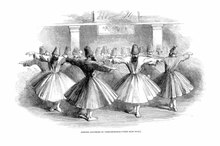How to Stop Voice From Changing When Nervous
If you are nervous when you are speaking, that can cause a noticeable change in your voice tone. A shaky voice conveying nerves can be a big issue, whether you are making a public speech or having an important one-on-one conversation. Conveying nervousness in your voice tone or body language can reduce your chances of success in anything from a job interview to a date.
Convey confidence when you speak. Rather than concentrating on not messing up, aim to project confidence and authority in your voice tone. This makes you seem more knowledgeable and lends more weight to the points you are making. Motivational speaker and communication specialist Rachel Green cites voice volume as a major factor in confident communication. Green says that confident communication is easy to hear, but quiet speech can convey nervousness.
Exercises for Stuttering
Learn More
Put energy and effort into your diction and pronunciation when speaking. A common sign of nervousness is when your words fade away or sound mumbled at the end of a sentence. Common sounds that can waver when you are nervous include the sounds of the letters T, D and K. Practice repeating a phrase like “bake the cake,” emphasizing clarity at the start and end of each word.
Practice your speech. Tape record yourself giving the speech, them listen for for clarity in your voice and identify where certain words or letters convey nervousness. Continue to practice and to gain confidence as you improve.
4 Key Characteristics of Nonverbal Communication
Learn More
Use body language and posture to display confidence. According to the Montgomery County Public Schools in Maryland, research shows that when you communicate with others, words convey only 7 percent of your feelings, while body language conveys 55 percent. Slumped shoulders and slouched posture can convey nervousness when you are speaking. Practice speaking into a mirror or have a friend watch you speak, then note if you convey nervousness with any posture or twitching motions. Practice repeatedly, and gain confidence from improvements you see.
Related Articles
References
Resources
Writer Bio
With a sport psychology master's degree and a successful coaching background, Stewart Flaherty has experience in improving performance in a number of areas. His articles specialize in sport psychology, nutrition and coaching.








